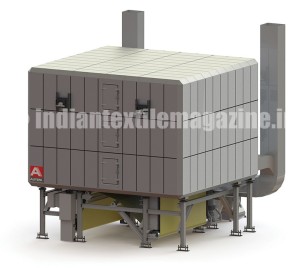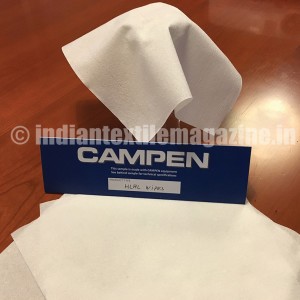AUTEFA Solutions Austria GmbH and CAMPEN Machinery A/S Denmark have entered into an agreement to co-operate in the development and sales of machinery and production lines for the traditional airlaid industry as well as for the new “Hydro Laced Airlaid Process” (HLAL) for non-flushable and flushable, dispersible, and biodegradable nonwovens invented by CAMPEN Machinery.
André Imhof, CEO, AUTEFA Solutions Austria GmbH, and Arne Christensen, CEO, CAMPEN Machinery A/S, together explained: “With our two companies we are building a strong partnership. Each of our companies has developed new and energy-saving technology. Together we offer complete lines to produce flushable wipes. With our combined portfolios we offer advanced production technology, starting from raw material to the final nonwovens products.”
AUTEFA Solutions offers the spunlace, drying and powder scattering technology as well as carding and card feeding technology. For the spunlace process it has developed a new hydro entanglement jet. This technology enables 30 per cent energy savings due to the special jet design. A new square drum dryer SQ-V completes the line.
AUTEFA Solutions’ product range covers fiber preparation machines, nonwovens cards as well as aerodynamic web forming machines (Airlay), crosslappers and needle looms for mechanical bonding. It delivers equipment for thermal bonding, drying systems, including dryers and ovens for the wood pulp, and short-cut stable fiber-based airlaid industry.
CAMPEN Machinery is a specialist for webforming from pulp fibers, or other fibers, via fiber dosing, hammermill and airlaids technology, compacting/embossing or calandering units, as well as the winding technology of airlaids or spunlaced airlaid products.
CAMPEN Machinery A/S is owned by the VARO A/S Group which has for more than 40 years built hammer mills, drum forming heads and complete lines for globally leading manufacturers within the airlaid industry. The group has supplied process lines and equipment for the airlaid industry worth approximately 20 per cent of the world capacity.

